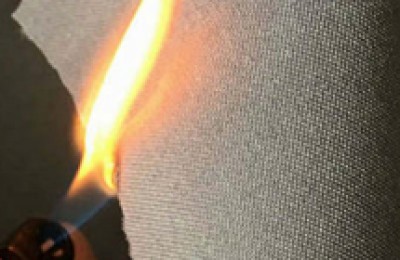After the Spring Festival, the futures commodity prices of the three polyester industry chains of ethylene glycol, PTA and short fiber have increased in turn, but the logic and extent of the increase for each variety are different. The increase in PTA is mainly driven by costs; the increase in ethylene glycol is not only driven by costs, but also partly due to the large-scale shutdown of local equipment caused by extremely cold weather in the United States, as well as the tight supply of local ethylene glycol in Europe; the price of staple fiber The obvious increase before the Spring Festival was mainly due to the rise in oil prices stimulating downstream enthusiasm for pre-holiday stocking. The rise in raw materials after the holiday brought double benefits to costs and production and sales.
Overall, the growth rate of ethylene glycol and staple fiber was more obvious. During this process, both ethylene glycol and staple fiber saw excess profits; during this process, PTA’s profits continued to be reduced. Squeeze, the increase is obviously lagging behind.
From the end of February to the beginning of March, the three futures varieties of the polyester industry chain weakened successively. Among them, ethylene glycol, which had seen a significant increase before, fell by about 18%, and short fiber fell by about 15%. %, and PTA, which lagged behind in growth, fell by about 10%.
The above performance can be attributed to fundamental reasons. The current supply and demand of ethylene glycol and short fiber remain tight, and the price elasticity is relatively good. Downstream procurement can easily lead to rapid price increases; while PTA The social inventory is huge, and another device was put into production in the first quarter. Therefore, the supply and demand pattern is weak, prices are inelastic, and we can only passively follow the raw materials.
The PTA device is generally inspected once a year. The second quarter of each year is the centralized inspection period for the PTA device, which mainly involves regular maintenance of the device and replacement of the catalyst. The inspection time is generally 2- 3 weeks. Judging from the equipment maintenance situation in previous years, if the industry’s profits are good, the equipment maintenance may be postponed. Some companies have better equipment maintenance, and the maintenance interval can be postponed from one year to more than 18 months; if the industry’s profits are poor, the company will perform maintenance on time. Maybe even an early overhaul. Recently, domestic PTA companies have announced maintenance plans, and maintenance is more active than in previous years.
Although the PTA processing gap rebounded briefly after the Spring Festival, it has recently returned to below 300 yuan/ton again. Calculated based on this processing fee level, Domestic mainstream device processing has already suffered losses, and the cash flow of new lower-cost devices put into production in recent years is not optimistic. Therefore, domestic equipment has been actively overhauled recently. In addition to the long-term shutdown equipment of 5.49 million tons, the equipment maintenance was relatively concentrated in March and April. The largest equipment maintenance loss was in April, which may reach about 480,000 tons. The maintenance volume dropped significantly in May and June. , at the same time, it is more likely that Yisheng New Materials’ new production capacity of 3.5 million tons will form a supply from May to June. Therefore, from a supply perspective, the pressure on PTA was significantly reduced from March to April. After May, when maintenance equipment is restarted and new production capacity is put into operation, the supply of PTA will increase significantly again.
On the demand side, the polyester operating rate in the first quarter of this year was significantly higher than in previous years. The post-holiday installations recovered quickly, reaching nearly 100% in mid-March. The level of 94% is much higher than the average level of 84.5% in the same period from 2015 to 2020. After the Spring Festival, polyester stockpiles fell to the lowest level in the same period in recent years. Since March, production and sales have weakened, and polyester stockpiles have increased. However, overall, the industry’s inventory pressure is not great, product profits are good, and it is more likely to continue to maintain normality. If calculated based on the polyester operating rate of 95%, PTA maintained a balance between supply and demand in March, and about 180,000 tons were destocked in April.
Judging from the current market performance, equipment maintenance has led to a decrease in spot tradability, the basis continues to strengthen, and the outflow of PTA futures warehouse receipts supplements the spot market. As of March 17, 38,528 futures warehouse receipts on the Zhengzhou Commodity Exchange had flowed out from the highest point, totaling more than 190,000 tons. At present, the exchange’s warehouse receipts exceed 350,000, and the spot inventory of nearly 1.8 million tons is still far higher than the high levels in previous years. Therefore, the maintenance of PTA equipment is conducive to the phased digestion of inventory, but it is difficult to achieve substantial benefits for the social inventory of about 4 million tons. Returning to the price point of view, the processing difference of PTA may rebound due to equipment maintenance, but there is not much room, because once profits obviously improve, the maintenance may be postponed or shortened. After May, the industry’s processing gap will inevitably return to a low level again, and old equipment with high costs will once again face the cost test.
In summary, the profits of the PTA industry are skewed, equipment is actively overhauled, and the supply and demand pattern is improved in stages. However, social inventory levels are high and PTA supply is still abundant. , there is little room for significant improvement in industry profits. Short-term prices may be relatively strong, but the center of gravity still follows the operation of raw materials. Oil prices still lead the direction, but there is room for compression of profits in naphtha and PX links, which is a potential negative drag on PTA prices; midline Supply pressure remains high, industry competition intensifies, and old equipment may face challenges. </p






